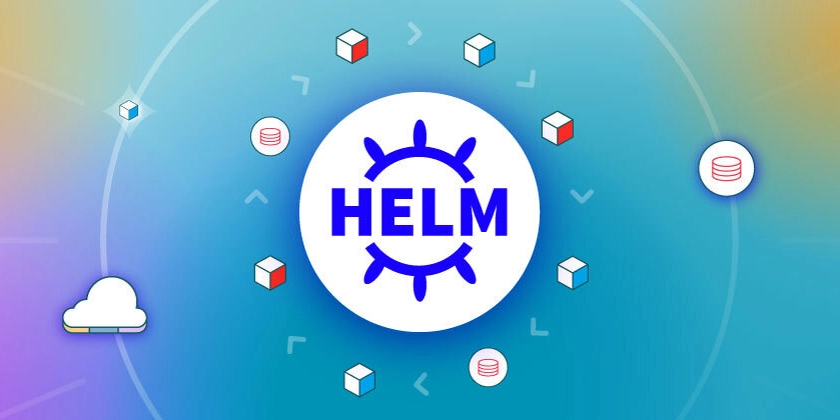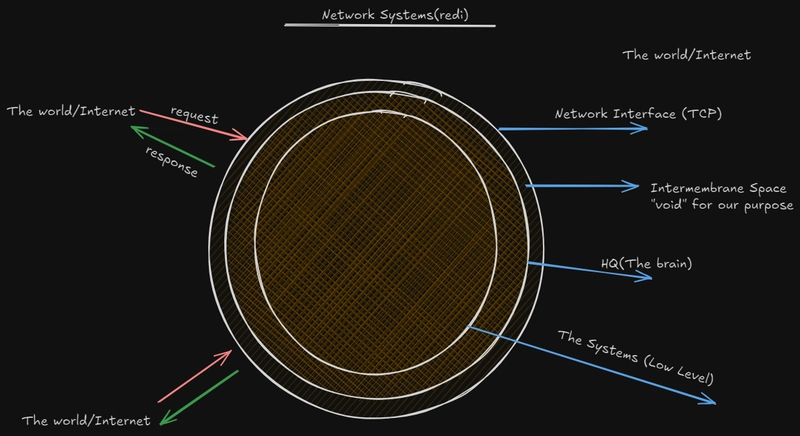Leveraging Helm for Standardized Application Deployments: A Technical Deep Dive
Did you know that a staggering 90% of Kubernetes users rely on Helm for package management (CNCF, 2023)? This statistic showcases the value of Helm in modern Kubernetes deployments, and indicates that manually configuring deployments is no longer a scalable option. But while Helm is a popular tool, many organizations still face challenges in using it to create consistent, and repeatable deployments. What are the core technical aspects of using Helm, and how can it be leveraged to achieve standardized and scalable deployments in a modern cloud environment? This blog post explores the technical details of using Helm, focusing on how to achieve standardization, reusability, and control over your Kubernetes deployments, all while avoiding over-complex processes. The Core Technical Concepts of Helm Helm is more than just a simple package manager; it is a powerful tool that enables you to create consistent, repeatable and reusable deployment workflows for Kubernetes. As Matt Butcher, co-creator of Helm, stated: "Helm is about making it easy to share and reuse Kubernetes configurations," (Deis, 2016). To understand the value, let’s explore its core technical components: Helm Charts: Technical Details: Helm charts package all Kubernetes resources required for an application or service, which includes configuration files, pod definitions, deployments, secrets and more. Implementation: These charts are organized as a specific file system structure, and also use a values.yaml file to specify configurable parameters. The charts also often have dependencies, which are also packaged as Helm charts. Benefits: Enables repeatable deployments by combining all Kubernetes components into one manageable package. Templating: Technical Details: Helm uses templating to parameterize Kubernetes manifests using the Go templating language, which means that a single chart can be used in different environments by simply passing different values. Implementation: Uses a values.yaml file to store configurable variables that are then used to customize the chart for each specific environment. Benefits: Allows flexibility, and reduces the complexity of deployments by using reusable charts that can be configured through a simple interface. Release Management: Technical Details: Keeps track of deployed versions of an application and also allows you to rollback deployments to a previous version if required. This functionality relies on Kubernetes to maintain the correct status of deployments. Implementation: Helm uses Kubernetes metadata to store all deployment details, and provides commands to manage them. Benefits: Makes it easier to manage updates, and rollbacks and reduces the risk of deployment failures. Dependency Management: Technical Details: Charts can depend on other charts, allowing a team to leverage prebuilt components, and also deploy complex systems. Helm manages the dependencies, and makes sure that all required components are deployed. Implementation: Chart developers can configure a requirements.yaml file to specify other charts needed for a deployment. Benefits: Allows complex applications to be deployed by reusing components, and makes it easier to manage dependency upgrades. Technical Benefits of Using Helm for Standardized Deployments: Helm, when used correctly, provides the building blocks required to create standardized application deployments, that are easy to use, configure and manage. Standardization and Consistency: Technical Details: Helm promotes standardized deployments through the use of charts, which can be reused across different environments and teams, while using values to control how each chart is configured. Implementation: Use of version controlled Helm charts ensures a consistent approach to deployments, while minimizing configuration drift and the risk of errors. **Benefits: **This reduces deployment errors and improves the overall reliability of deployments. Simplified Complex Deployments: Technical Details: Helm packages all Kubernetes resources (deployments, services, secrets, configmaps) into a single deployable artifact. This greatly reduces the management overhead, and allows for deployment as a single unit. Implementation: Deployment is simplified with a single command, and can be easily customized based on different requirements. **Benefits: **Simplifies complex applications, reduces human error and increases the speed of software deployment. Reusable Application Components: Technical Details: Helm charts enable the reuse of application components across different projects and teams by creating a library of common infrastructure and application configuration patterns. Implementation: Teams can build and share charts as components within the organization, promoting reusability and better deployments. Benefits: This reduces the need for repetitive work, and accelerates time to market. ** Streamlined Updates and Rollbacks:** Technical Details

Did you know that a staggering 90% of Kubernetes users rely on Helm for package management (CNCF, 2023)?
This statistic showcases the value of Helm in modern Kubernetes deployments, and indicates that manually configuring deployments is no longer a scalable option. But while Helm is a popular tool, many organizations still face challenges in using it to create consistent, and repeatable deployments.
What are the core technical aspects of using Helm, and how can it be leveraged to achieve standardized and scalable deployments in a modern cloud environment? This blog post explores the technical details of using Helm, focusing on how to achieve standardization, reusability, and control over your Kubernetes deployments, all while avoiding over-complex processes.
The Core Technical Concepts of Helm
Helm is more than just a simple package manager; it is a powerful tool that enables you to create consistent, repeatable and reusable deployment workflows for Kubernetes. As Matt Butcher, co-creator of Helm, stated: "Helm is about making it easy to share and reuse Kubernetes configurations," (Deis, 2016). To understand the value, let’s explore its core technical components:
Helm Charts:
Technical Details: Helm charts package all Kubernetes resources required for an application or service, which includes configuration files, pod definitions, deployments, secrets and more.
Implementation: These charts are organized as a specific file system structure, and also use a values.yaml file to specify configurable parameters. The charts also often have dependencies, which are also packaged as Helm charts.
Benefits: Enables repeatable deployments by combining all Kubernetes components into one manageable package.
Templating:
Technical Details: Helm uses templating to parameterize Kubernetes manifests using the Go templating language, which means that a single chart can be used in different environments by simply passing different values.
Implementation: Uses a values.yaml file to store configurable variables that are then used to customize the chart for each specific environment.
Benefits: Allows flexibility, and reduces the complexity of deployments by using reusable charts that can be configured through a simple interface.
Release Management:
Technical Details: Keeps track of deployed versions of an application and also allows you to rollback deployments to a previous version if required. This functionality relies on Kubernetes to maintain the correct status of deployments.
Implementation: Helm uses Kubernetes metadata to store all deployment details, and provides commands to manage them.
Benefits: Makes it easier to manage updates, and rollbacks and reduces the risk of deployment failures.
Dependency Management:
Technical Details: Charts can depend on other charts, allowing a team to leverage prebuilt components, and also deploy complex systems. Helm manages the dependencies, and makes sure that all required components are deployed.
Implementation: Chart developers can configure a requirements.yaml file to specify other charts needed for a deployment.
Benefits: Allows complex applications to be deployed by reusing components, and makes it easier to manage dependency upgrades.
Technical Benefits of Using Helm for Standardized Deployments:
Helm, when used correctly, provides the building blocks required to create standardized application deployments, that are easy to use, configure and manage.
Standardization and Consistency:
Technical Details: Helm promotes standardized deployments through the use of charts, which can be reused across different environments and teams, while using values to control how each chart is configured.
Implementation: Use of version controlled Helm charts ensures a consistent approach to deployments, while minimizing configuration drift and the risk of errors.
**Benefits: **This reduces deployment errors and improves the overall reliability of deployments.
Simplified Complex Deployments:
Technical Details: Helm packages all Kubernetes resources (deployments, services, secrets, configmaps) into a single deployable artifact. This greatly reduces the management overhead, and allows for deployment as a single unit.
Implementation: Deployment is simplified with a single command, and can be easily customized based on different requirements.
**Benefits: **Simplifies complex applications, reduces human error and increases the speed of software deployment.
Reusable Application Components:
Technical Details: Helm charts enable the reuse of application components across different projects and teams by creating a library of common infrastructure and application configuration patterns.
Implementation: Teams can build and share charts as components within the organization, promoting reusability and better deployments.
Benefits: This reduces the need for repetitive work, and accelerates time to market.
** Streamlined Updates and Rollbacks:**
Technical Details: Helm manages application versions, and simplifies updates and rollbacks through a command line interface, which you to easily manage application versioning.
Implementation: Versioned deployments can be rolled back in case of errors, and new versions can be deployed seamlessly.
**Benefits: **Reduces risks associated with deploying new updates and reduces downtime in the case of issues.
Improved Security and Governance:
Technical Details: While Helm does not solve security by itself, it allows you to implement security measures such as image signing, and access control to Helm charts.
Implementation: Using tools such as RBAC, OPA or Kyverno can help make your deployments more secure, and compliant.
Benefits: Provides a better understanding of who has access, and helps maintain a strong security posture.
Additional Key Considerations:
Environment Segmentation: Use Helm's templating to define separate configurations for dev, staging, and production environments.
Helmfile for Multi-Chart Coordination: Use Helmfile to manage and deploy multiple Helm charts together, making it easier to orchestrate complex deployments.
Monitoring and Observability: Integrate Helm deployments with monitoring tools like Prometheus, Grafana, and Loki to improve visibility into deployed services.
Helm Secrets: Securely manage sensitive information using plugins like helm-secrets, which integrates with tools like Mozilla SOPS and AWS KMS.
Linting and Validation: Use helm lint and helm template to validate charts before deployment to avoid runtime errors.
Real-World Implementation and Use Cases:
Large E-Commerce Platforms: E-commerce platforms often use Helm to manage and deploy their applications across multiple Kubernetes clusters. This is often done using a central chart repository that serves all teams in the organization, helping them maintain consistent and repeatable deployments.
Financial Institutions: Banks and other financial organizations use Helm to deploy their applications, allowing them to meet compliance, and security standards, and also control who has access to their deployments.
Tech Startups: Technology startups leverage Helm for fast and iterative deployments, allowing them to deploy features quickly and efficiently. This enables more agility, and also improves innovation.
Actionable Takeaways:
Implementing Helm for standardized application deployments involves a few key steps:
Create Reusable Helm Charts: Begin by packaging your application's Kubernetes manifests into a Helm chart, making sure to use a standard approach, and a repeatable method.
Use Version Control for Charts: Store Helm charts in a version control system like Git, which allows you to collaborate effectively. This helps with tracking changes, and is also crucial for any sort of auditing or compliance related processes.
Implement a Chart Repository: Deploy a centralized chart repository to store and share Helm charts within your organization. This promotes reuse, and also makes it easier to implement updates.
Prioritize Security: Use RBAC, image signing, and other security best practices to secure Helm deployments.
Automate Deployments: Use CI/CD pipelines to automate Helm deployments, and make it part of a repeatable workflow.
Validate Your Deployments: Implement testing at each stage of your deployment pipeline, to make sure everything is working properly, and that no security issues are present.
Using Helm to its full potential requires planning, and forethought. By understanding the core technical aspects of Helm, and creating a good implementation strategy, your organization can achieve more robust and repeatable Kubernetes deployments. If you are interested in learning more about how you can effectively leverage Helm, while also reducing the operational overhead, explore the various solutions available in the market.
Zopdev team
References:
- CNCF. (2024). CNCF Annual Survey.
- Deis. (2016). Announcing Helm: A Package Manager for Kubernetes.




































































































































































![[The AI Show Episode 147]: OpenAI Abandons For-Profit Plan, AI College Cheating Epidemic, Apple Says AI Will Replace Search Engines & HubSpot’s AI-First Scorecard](https://www.marketingaiinstitute.com/hubfs/ep%20147%20cover.png)






















































































































































































































































































































































































![Apple Working on Brain-Controlled iPhone With Synchron [Report]](https://www.iclarified.com/images/news/97312/97312/97312-640.jpg)




































































































